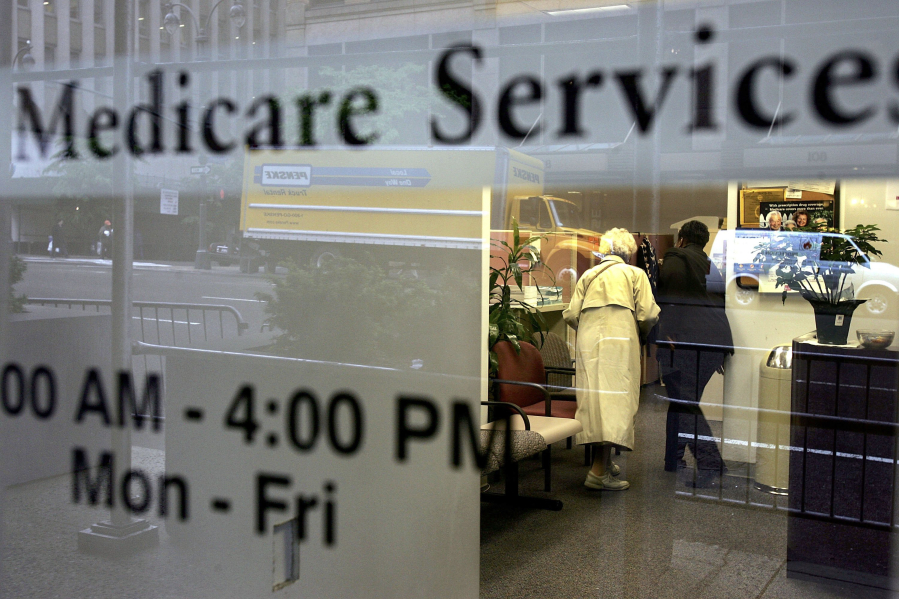Doctors are again ramping up what has become a perennial lobbying campaign to urge Congress to increase Medicare payments in order to offset cuts scheduled to go into effect Jan. 1.
The cuts, the result of a 2020 Centers for Medicare and Medicaid Services decision to increase payments for underpaid services like primary care and maternal health, are meant to offset the costs of increasing payments for those services.
But every year since that Trump-era rule, groups representing doctors have lobbied Congress to add billions of dollars to Medicare spending to avoid those cuts. Every year, Congress has obliged.
This year, the groups, which include the American Medical Association, Surgical Care Coalition and Medical Group Management Association, are asking again, with their efforts becoming more urgent as Congress prepares to return from recess and appropriations season kicks into overdrive.
“I think Congress probably isn’t thrilled they have to address this again, but they would be hard pressed not to,” said Claire Ernst, director of government affairs for Medical Group Management Association, which represents physician practices. “We’re almost in crisis mode here.”
Doctors’ groups say they might have to see fewer Medicare patients or reduce staff if the cuts go through.
Without action from Congress, the Medicare conversion factor, which is used to calculate billing codes into payment rates, would see a 4.5 percent cut, amounting to about $3 billion or $4 billion less for providers paid under the Medicare Physician Fee Schedule.
As in past years, more expensive specialties like radiology, surgery and podiatry are estimated to see the largest cuts, ranging from 4 to 7 percent.
It’s unclear whether Congress will be willing to spend more money on Medicare yet again; committee chairs and leadership have yet to publicly address the issue this year.
The doctors’ groups want Congress to provide enough money to offset the 4.5% cut, waive a separate round of 4% pay-as-you-go cuts that are slated to take effect Jan. 1, the result of the partisan COVID-19 relief law that increased the deficit, and provide an additional increase to combat inflation. The most likely vehicle would be the end-of-year spending bill.
“We’re continuing to urge action on this and try to see if we can’t facilitate some commitment toward action on this issue,” said Christian Shalgian, director of the Division of Advocacy and Health Policy at the American College of Surgeons.
Doctors’ groups lobbied for Congress to add more money to the Medicare Physician Fee Schedule rather than reverse pay increases for underpaid specialties and were successful in the last two years. That’s their approach this year as well.
Congress stepped in to offset the cuts by spending enough money to boost payments across the board by 3.75% in 2021 and 3% in 2022. The most recent bump expires Dec. 31.
The 4.5% cut slated to take effect in January takes into account the expiration of the payment boost and other increases of spending expected next year. The final rule is expected in November.
The now annual exercise in getting Congress to increase Medicare payments is not preferable but it is the most likely path forward for the foreseeable future, lobbyists say. Any long-term fix would require an overhaul to the way Medicare pays physicians, and Congress doesn’t seem up to that task right now. It last overhauled Medicare payments in 2015 after experiencing similar issues with payment cuts.
“I think the problem is they’re looking for some silver bullet in terms of fixing the schedule without spending a significant amount of money,” said Jeffrey Davis, director of regulatory affairs at American College of Emergency Physicians.
In the meantime, short-term fixes will have to do, but the problem is expected to worsen in 2024 when more pay boosts for primary care doctors are supposed to take effect, said Ernst.
“I think we kind of have to go back to the drawing board, to some extent, to figure out how to avoid this,” Ernst said.
The American Medical Association released principles for payment changes earlier this year that were endorsed by dozens of medical groups, including the Medical Group Management Association. It called for annual inflation updates, eliminating budget neutrality requirements in the fee schedule and other changes.
“Whatever we end up coming up with really has to be well thought out and comprehensive to avoid, essentially, coming back to this place that we’re in now,” she said.



